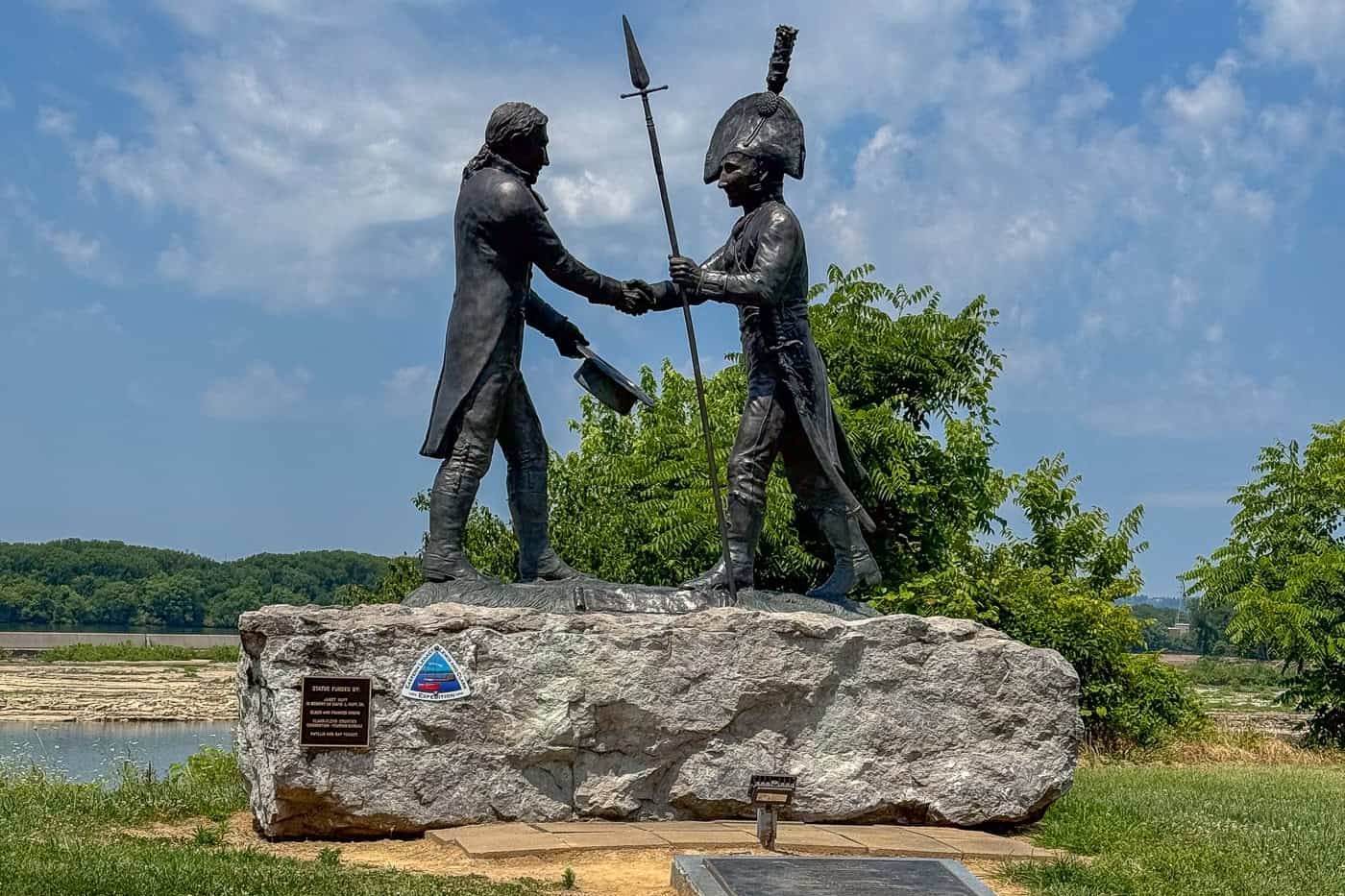Hidden Fossilized Seabeds Of Indiana’s Falls Of The Ohio

Have you ever wondered about the ancient secrets hidden beneath the surface of Indiana? Falls of the Ohio State Park offers a unique glimpse into the past with its fossilized seabeds. These ancient formations date back millions of years, showcasing remnants of marine life that once thrived in a prehistoric ocean. Walking along the park's trails, you can see fossils of corals, brachiopods, and other sea creatures embedded in the rock. It's like stepping into a natural history museum, but outdoors. Whether you're a geology enthusiast or just curious about Earth's history, this park provides a fascinating experience. Ready to explore the hidden treasures of Indiana's ancient seabeds?
Hidden Fossilized Seabeds of Indiana's Falls of the Ohio
Indiana's Falls of the Ohio State Park is a treasure trove of ancient history. This park, located on the banks of the Ohio River, is famous for its extensive fossil beds. These fossilized seabeds date back to the Devonian period, over 386 million years ago. Let's dive into some of the most fascinating spots within this park where you can witness these ancient wonders.
The Main Fossil Bed
The Main Fossil Bed is the heart of the park. Spanning over 220 acres, this area is a fossil hunter's paradise. Here, you can find a variety of marine fossils, including corals, brachiopods, and crinoids. The sheer number and diversity of fossils make this spot a must-visit.
Coral Gardens: This section is teeming with fossilized corals. These ancient marine animals formed massive reefs, which are now preserved in stone. Walking through this area feels like stepping back in time to an ancient ocean.
Brachiopod Bonanza: Brachiopods are marine animals with hard shells. The Main Fossil Bed has an abundance of these fossils, offering a glimpse into the diverse marine life that once thrived here.
Crinoid Central: Crinoids, also known as sea lilies, are another common fossil found in this area. Their intricate, flower-like structures are fascinating to examine.
The Interpretive Center
The Interpretive Center offers a deeper understanding of the park's geological and paleontological significance. This center provides educational exhibits and guided tours, making it a great starting point for your adventure.
Exhibit Hall: The Exhibit Hall features detailed displays of fossils found in the park. Interactive exhibits help visitors understand the ancient marine environment and the creatures that lived there.
Guided Tours: Knowledgeable guides lead tours through the fossil beds, providing insights into the history and significance of the fossils. These tours are perfect for those who want a more in-depth experience.
The Riverbank
The Riverbank area offers a unique perspective on the fossil beds. As the Ohio River flows, it continually exposes new fossils, making this a dynamic and ever-changing spot.
Erosion Zone: This area is where the river's current has eroded the rock, revealing fresh fossils. It's a great place to find newly exposed specimens.
Tide Pools: Small pools along the riverbank often contain fossils that have been washed out of the rock. These pools are perfect for a closer look at individual fossils.
The Woodland Loop
The Woodland Loop trail provides a scenic hike through the park's forested areas. Along this trail, you can find smaller, less-visited fossil beds that offer a quieter experience.
Hidden Fossil Patches: Scattered throughout the woods are smaller fossil beds. These hidden patches are perfect for those who enjoy a bit of solitude while exploring.
Forest Floor Finds: Keep an eye on the ground as you hike. Fossils can often be found among the fallen leaves and undergrowth.
The Observation Deck
The Observation Deck offers a panoramic view of the fossil beds and the Ohio River. It's an excellent spot for photography and taking in the park's natural beauty.
Scenic Overlook: This spot provides a breathtaking view of the fossil beds stretching out along the river. It's a great place to appreciate the scale and beauty of the park.
Photography Point: Capture stunning photos of the fossil beds and the river from this vantage point. The changing light throughout the day offers different photographic opportunities.
The Picnic Area
After a day of exploring, the Picnic Area is a perfect place to relax and enjoy a meal. Surrounded by nature, it's a peaceful spot to reflect on your discoveries.
Shaded Tables: Enjoy a picnic at one of the shaded tables. The surrounding trees provide a cool, relaxing environment.
Playground: If you're visiting with kids, the playground offers a fun break from fossil hunting. It's a great way to end your visit to the Falls of the Ohio.
Discovering Indiana's Ancient Seabeds
Indiana's Falls of the Ohio offers a unique glimpse into the past. The fossilized seabeds reveal ancient marine life, making it a must-visit for history buffs and nature lovers. Walking through these fossil beds, you can almost imagine the ancient seas that once covered the area. The park provides educational opportunities, guided tours, and a chance to see fossils up close. It's a fantastic spot for families, school trips, or anyone interested in geology. Don't miss the interpretive center, which adds depth to your visit with interactive exhibits. Whether you're a local or just passing through, the Falls of the Ohio is a hidden gem worth exploring. So, pack your bags, grab your camera, and get ready to step back in time. Indiana's ancient seabeds are waiting for you.

